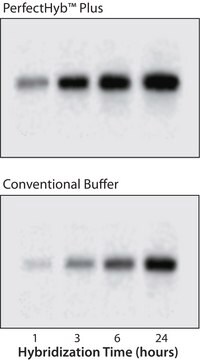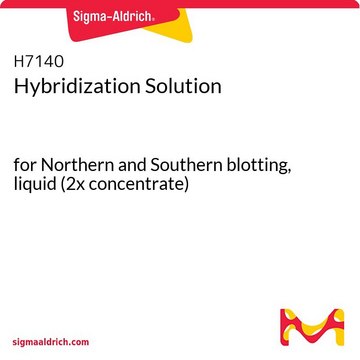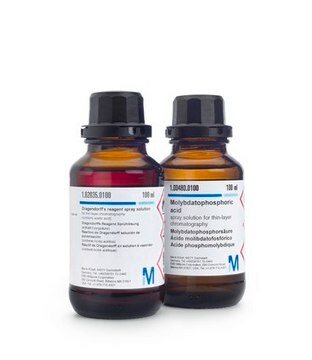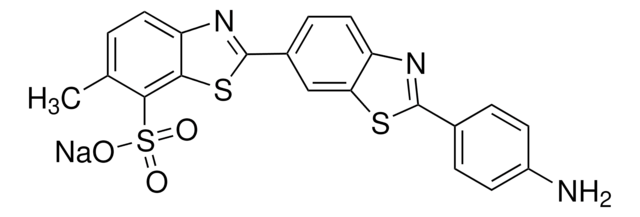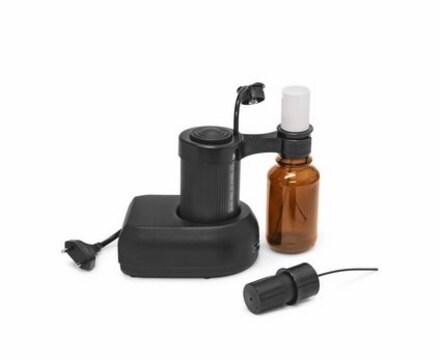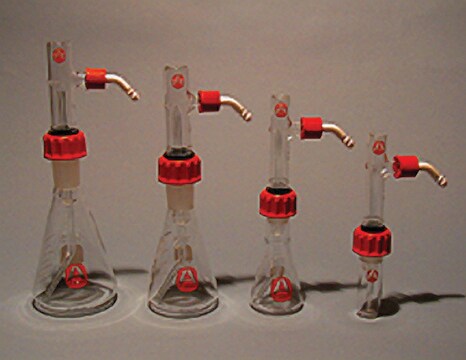Recommended Products
Product Name
Molybdenum Blue spray reagent,
description
1.3% molydbenum oxide in 4.2 M sulfuric acid
Molybdenum Blue reagent
Quality Level
form
liquid
technique(s)
thin layer chromatography (TLC): suitable
application(s)
diagnostic assay manufacturing
hematology
histology
storage temp.
room temp
General description
Molybdenum Blue reagent is suitable for use in the detection of phospholipids and related compounds.
Application
For use in the detection of phospholipids and related compounds.
Molybdenum Blue reagent may be used for the determination of phosphatidylglycerol and the lecithin/sphingomyelin ratio in biological samples and phospholipids in Halobellus by using single-dimension thin-layer chromatography (TLC) method and high-performance thin-layer chromatography (HPTLC), respectively.
Signal Word
Danger
Hazard Statements
Precautionary Statements
Hazard Classifications
Carc. 2 - Eye Dam. 1 - Met. Corr. 1 - Skin Corr. 1A
Storage Class Code
8B - Non-combustible corrosive hazardous materials
WGK
WGK 1
Flash Point(F)
Not applicable
Flash Point(C)
Not applicable
Personal Protective Equipment
dust mask type N95 (US), Eyeshields, Gloves
Choose from one of the most recent versions:
Already Own This Product?
Find documentation for the products that you have recently purchased in the Document Library.
Customers Also Viewed
Tuan Manh Nguyen et al.
Journal of microbiology (Seoul, Korea), 55(8), 635-639 (2017-07-05)
There are marked differences between wet and freeze-dried cells with regard to the identification of polar lipid components. The determination of the polar lipid composition of freeze-dried cells is well established. However, several approaches to identifying polar lipid components in
Nocardioides panacisoli sp. nov., isolated from the soil of a ginseng field.
Cho CH
International Journal of Systematic and Evolutionary Microbiology, 60, 387-387 (2010)
Methods in Microbiology (1987)
Sylvia Kristyanto et al.
Journal of microbiology (Seoul, Korea), 56(5), 317-323 (2018-05-04)
A novel, aerobic, Gram-stain-negative, non-motile, non-spore forming, rod-shaped bacterium, designated strain Dol 15-39T, was isolated from a seawater sample near Geoje Island in the South Sea, Republic of Korea. The strain was found to be oxidase-negative and catalase-positive. The isolate
Alexander Wacker et al.
Frontiers in plant science, 7, 264-264 (2016-03-26)
We tested the influence of two light intensities [40 and 300 μmol PAR / (m(2)s)] on the fatty acid composition of three distinct lipid classes in four freshwater phytoplankton species. We chose species of different taxonomic classes in order to
Our team of scientists has experience in all areas of research including Life Science, Material Science, Chemical Synthesis, Chromatography, Analytical and many others.
Contact Technical Service
